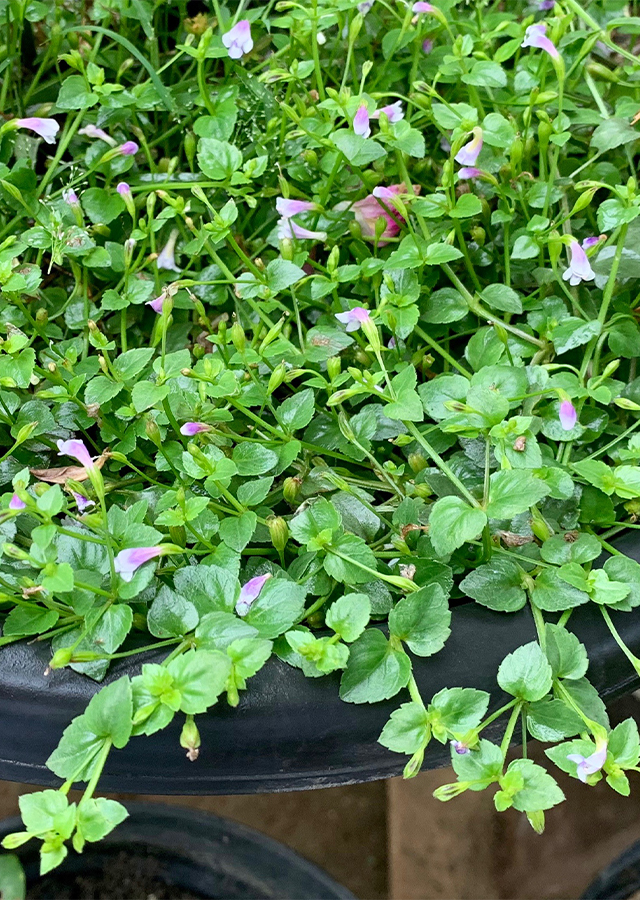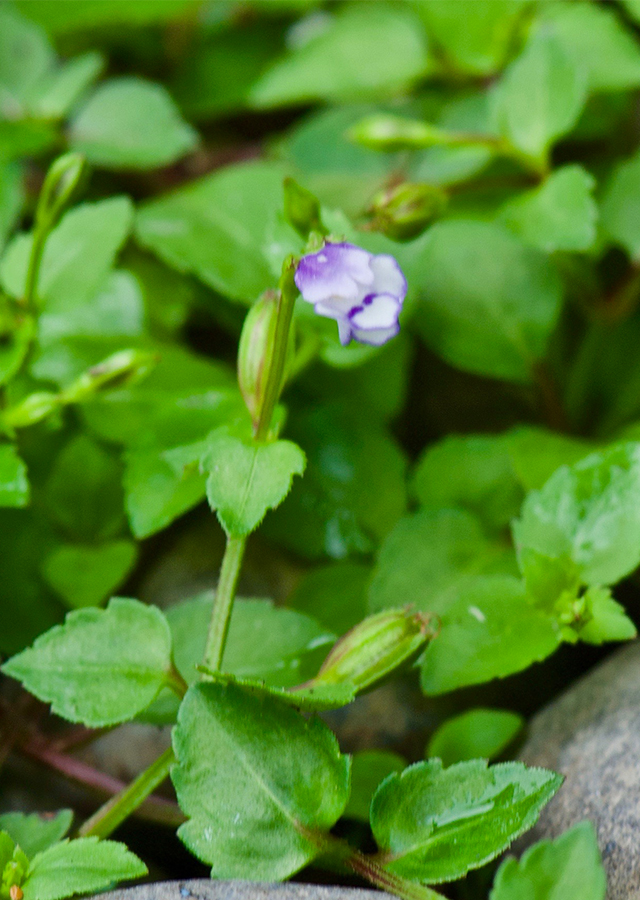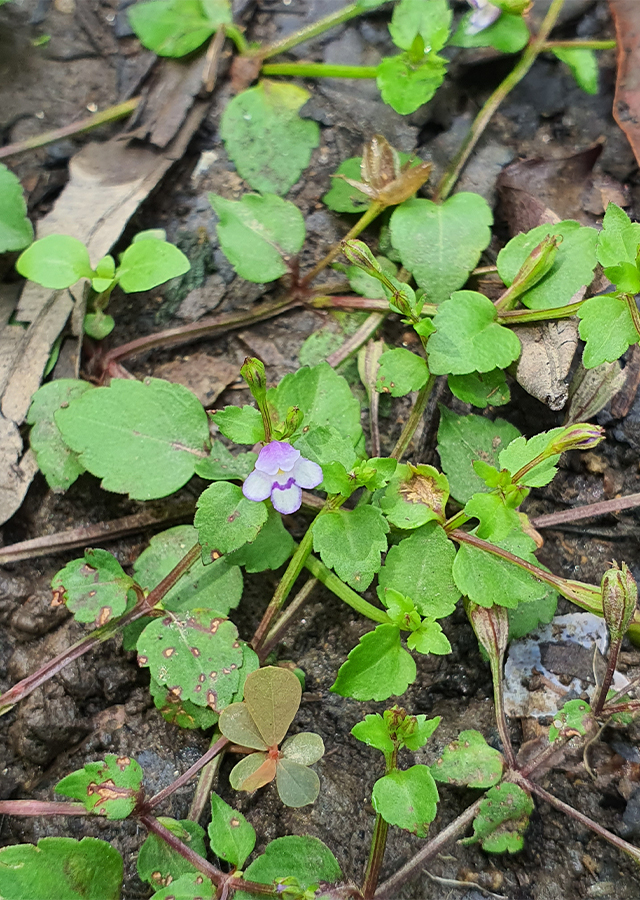Brittle False Pimpernel
Torenia crustacea (L.) Cham. & Schltdl.
Linderniaceae
Location in our garden
Principal



Synonym
Hornemannia ovata Link & Otto
Lindernia crustacea (L.) F.Muell.
Lindernia gracilis (Bonati) Bonati
Habitus
Herbaceous. An erect annual to short-lived perennial plant growing 10 - 20 cm tall.
Part Used
The Whole Plant
Growing Requirements
Full Sunshine
Habitat
Riverbanks
Roadside
Grassland
Overview
Brittle False Pimpernel is native to tropical Asia but is now present in the tropics. In Indonesia and Malaysia, it is one of the most common plants in Chinese pharmacies. Widely distributed from Africa through Asia to Australia and the Pacific via the tropical and subtropical regions of the world. In the IUCN Red List of Endangered Species, the plant is listed as 'Least Concern'.
Vernacular Names
Daun sirih ketok (Indonesian), Chapraghash (Bangladesh), Ganing (Brunei), Mu cao (China), Pitt papadi (Himalaya), Urikusa (Japan), To ti ke kang (Thailand), Maau thao (Vietnam).
Agroecology
Brittle False Pimpernel mostly grows up to 1,500 m altitude but can be found in 3,000 m. This plant is found in open places, rice paddies, and disturbed soil, at low and medium altitudes. Requires plenty of water and full light for growth.
Morphology
- Stems - sharply quadrangular to narrowly 4-winged, green to purple, hairy on angles and nodes, much-branched, the branches widely spreading.
- Leaves - ovate, 8 to 15 millimeters long, pointed at both ends, and distantly toothed in the margins.
- Flowers - borne singly in the axils of the leaves with stalks 1-3 cm long; calyx is green or purplish, 4-5 mm long, with pointed lobes about 1.5 mm long; corolla is purple, about 9 mm long.
- Fruits - brown, oblong-ovoid, 3.5-5 mm long.
- Seed - ellipsoid with both ends blunt and covered with pale brown warty protuberances.
Cultivation
It is propagated by generative technique (by seed).
Chemical Constituents
Flavonoid, lignin glucoside, phenyl alcohol glycoside, phenylpropene glycoside, glucosyl glycerol derivative, furanone, cinnamic acid derivatives, diterpenes, anthraquinones, ionones, phenylpropanoid glycosides.
Traditional Medicinal Uses
- The extracts of this plant possess significant antioxidant, anticancer, anti-inflammatory, antipyretic, and analgesic activities.
- Stems used for fever, hepatitis, and leucorrhea are found in Vietnam.
- In Assam, India, the Bodo tribe of Kokrajhar are disturbed by drinking whole plant decoction for diabetes care.
- In the Garhwal Himalaya, 1/2 teaspoon of plant decoction is taken twice a day for abdominal ailments.
- The plant is used to treat bilious afflictions and dysentery, in boils, sores, ringworm, shingles, hepatitis, and scratching poultices by the people of Indo-China.
- The decoction of leaves is often used by Malays after childbirth.
Part Used
Reference Sources
- Daimari, M., Roy, M.K., Swargiary, A., Baruah, S. & Basumatary, S. (2019). An ethnobotanical survey of antidiabetic medicinal plants used by the Bodo tribe of Kokrajhar district. Indian Journal of Traditional Knowledge 18(3):421-429.
- Dangwal, L.R., Sharma, A. & Rana, C.S. (2010). Ethno-medicinal plants of the Garhwal Himalaya used to cure various diseases: a case study. New York Science Journal 3(12):28-31.
- Das, S.R.C., Ahmed, A.B., Saha, D. & Chanda, I. (2019). Scientific evidence of Lindernia crustacea (L) F.Muell, an indigenous plant: a folklore medicine used traditionally. International Research Journal of Pharmacy 10(1):176-183.
- Minh, V.V., Yen, N.T.K. & Thoa, P.T.K. (2014). Medicinal plants used by the Hre community in the Ba to district of central Vietnam. Journal of Medicinal Plants Studies 2(3):64-71.
- Tsai, Y.C., Hohmann, J., El-Shazly, M., Chang, L.K., Dankó, B., Kúsz, N., Hsieh, C.T., Hunyadi, A. &, Chang, F.R. (2020). Bioactive constituents of Lindernia crustacea and its anti-EBV effect via Rta expression inhibition in the viral lytic cycle. Journal of Ethnopharmacology. https://doi.org/10.1016/j.jep.2019.112493.


